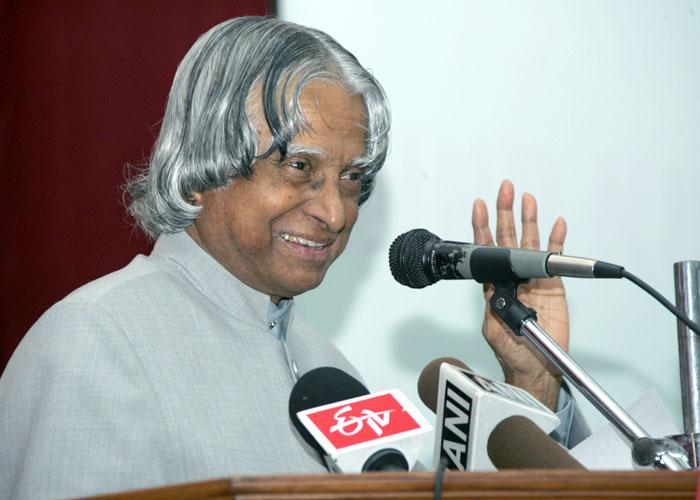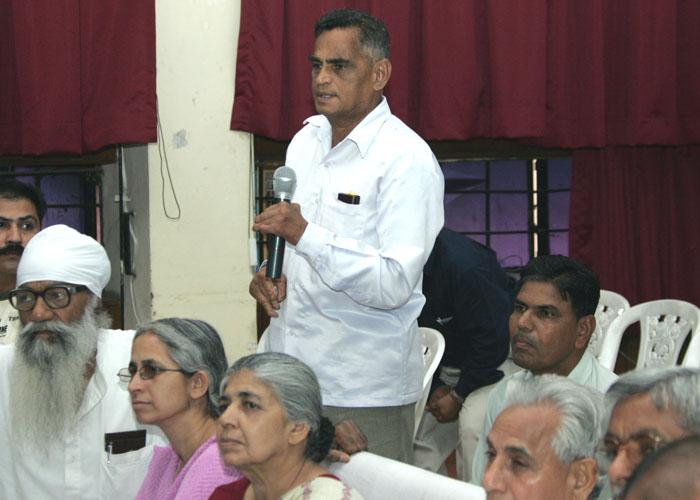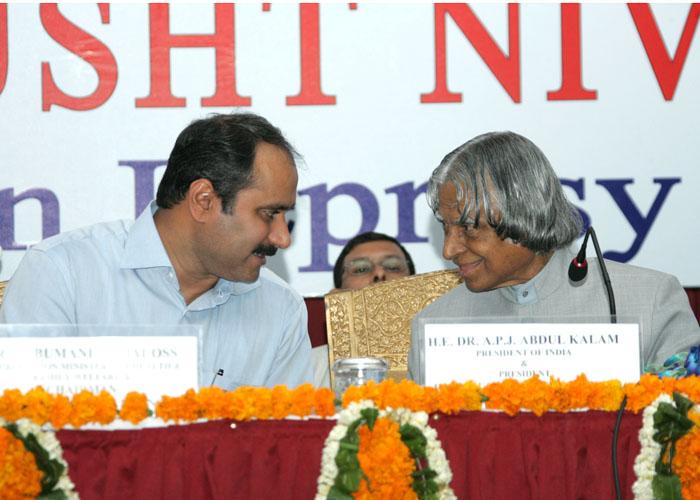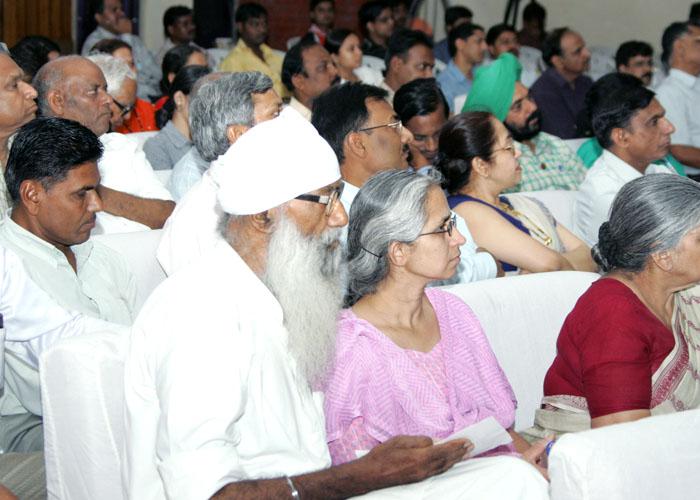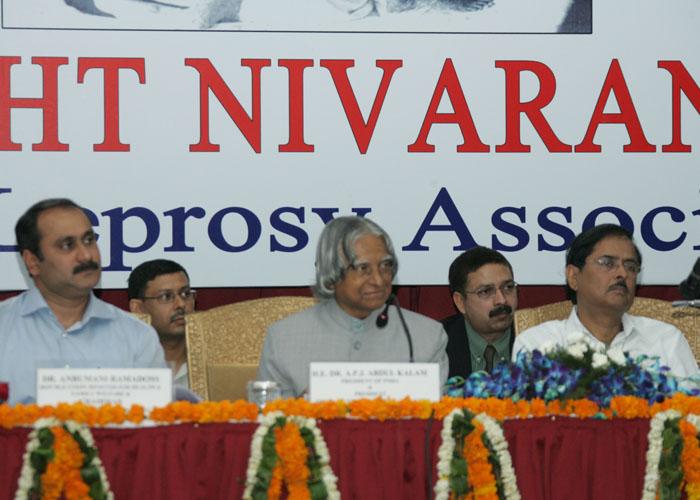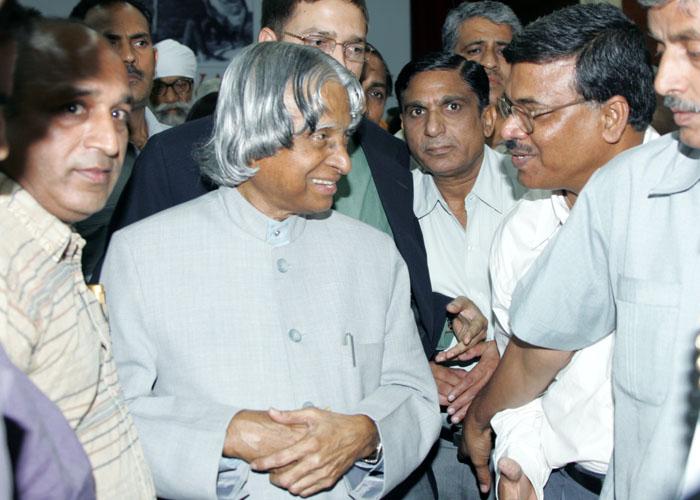Address at the Annual General Meeting of Hind Kusht Nivaran Sangh
Vishwa Yuvak Kendra, New Delhi. : 02-05-2005
Mission for total Eradication of Leprosy
I am delighted to participate in the Annual General Meeting of the Hind Kusht Nivaran Sangh (HKNS). I greet the Chairman and Members of the Hind Kusht Nivaran Sangh. I have chosen the topic for discussion in this meeting as "Mission for total eradication of Leprosy".
Status of Leprosy elimination in India
I am happy to note that the total number of patients has come down from 4 million to 0.3 million during the period 1981-2004. Is it true? I congratulate the Hind Kusht Nivaran Sangh for making some contributions in achieving this result within the constraint of limited resources. However, I find the 70% of the total leprosy patients are concentrated in five major states Bihar, UP, West Bengal, Orissa and Chattisgarh. Concerted efforts are needed for diagnosing the causes for this situation and developing strategies by which we can bring down to the level of less than one leprosy case per ten thousand population before the year 2005. It is essential that this should be done positively and should not be further shifted. This Sangh must enable implementation of the programme and monitor it. Also, there is a need to work out methods by which we will be in a position to rehabilitate the treated patients. By doing this we will be fulfilling at least one of the dreams of Mahatma Gandhi.
Gujarat model
I was studying the efforts made by Gujarat for leprosy elimination, disability care and rehabilitation of leprosy patients. They have carried out a comprehensive programme in which the state government medical colleges, hospitals and non-government organisations have become active partners. Based on the needs of particular districts they have carried out reconstructive surgery camps and mega camps to treat large number of patients. The micro planning for achieving the elimination integrated with the disability care enable targeted elimination of leprosy in States. I would suggest plastic Surgeons to come forward and enable free skin grafting and tissue regeneration for cured deformed victims.
Also number of NGOs have sponsored the treated leprosy patients for training them in handicrafts and cottage industries, so that they can find productive employment in their villages or they could find self employment opportunities towards rehabilitation. This model can be followed in UP, Bihar, Maharashtra and West Bengal.
Rehabilitation
I was studying the case of a person who had turned a new leaf in his life. He was also presented with the President's Award for the "Best Self-Employed Person". This being a great achievement in itself, his struggle was praise worthy as he has risen above ostracisation and the stigma of being a leprosy patient.
After 7 years of treatment in a Welfare and Rehabilitation Centre for Leprosy Patients, he is fully cured and runs his own telephone booth at a City Railway Station. This model should be followed by other rehabilitation centres in the country to make the treated leprosy patients feel normal to function in the society. All our NGOs should study such cases and provide treatment and rehabilitation with compassion. NGOs can make use of the rehabilitated patients to work on leather-craft, tailoring, printing, knitting and software units. I had visited Raphael, the Ryder Cheshire International centre at Dehra Dun where a NGO is actively involved in rehabilitating leprosy, tuberculosis patients and also arranging education including skill imparting education of the children of leprosy patients. It is essential that cured patients must be integrated with the society. Social isolation is deadlier than the disease.
Permanent cure ? what is to be done?
Early detection of the disease is essential in order to avoid permanent nerve damage and deformities. This will need survey of the population and detection. We need to educate the population about facts, the signs and cure for leprosy.
Multiple Drug Therapy (MDT) a combination of the anti-leprosy drugs such as rifampicin, clofazimine and dapsone has been found to be very effective treatment of the disease. This can be followed by government and non-government agencies working in treatment plans. Patients who have developed deformities/disabilities would need special care in providing suitable jobs which will ensure non-recurrence of the disease and also does not cause discomfort while working.
Programme Strategies
In endemic districts domiciliary treatment should be provided through staff trained in leprosy. For this purpose states who have successfully combated leprosy could help other states to follow their model. In moderate and low endemic districts treatment can be done through mobile leprosy clinics. We should organize health education to the patients, their families and the community to increase- awareness and to remove the stigma among the treated patients. Religious leader must clearly said that leprosy is not a communicable disease and patients should be treated as normal human beings during their discourses. This should become the essential part of rehabilitation. Deformity and ulcer care should become the part of the rehabilitation plan. NGO working in difficult area could make use of this strategy effectively for eradicating the leprosy in a time bound manner.
Regional development ? poverty and disease elimination
Real cure for elimination of leprosy lies in development of the region, that means developing the district, and the state. The development approach would provide for the people better amenities, clean drinking water, better hygiene and sanitation, better education and awareness, better healthcare, nutritious food resulting in livable environment. This holistic approach is the vital need for eliminating leprosy in endemic regions apart from the symptomatic cure being provided to existing cases. I would recommend the state governments in participation with non-governmental organisations to identify the endemic districts and initiate developmental measures.
Partnership in Leprosy Eradication Programme
Presently, I understand that there are two hundred and eighty five voluntary organization actively engaged in Leprosy Relief Services. These organizations are multi-functional. Their activities include case detection, case treatment, health education, referral, training, research and rehabilitation services. As far as Hind Kusht Nivaran Sangh is concerned you are mainly engaged in advocacy, co-ordination, information, education and communication services. Let us examine how this process can be intensified to detect leprosy cases so that they can be advised treatment. In this regard, I appreciate the project undertaken by HKNS for involving the school children in total population coverage for surveillance of leprosy and Multiple Drug Therapy (MDT) compliance. This technique can be used for faster detection of the cases through the involvement of large number of school children studying in different parts of the country.
Mission for eradication of Leprosy in India by 2005
Since Bihar, Jharkhand, Orissa, Chattisgarh, Maharashtra and West Bengal account for 53% of the cases, I would recommend the following action plan for eradication of leprosy in these six States by the year 2005.
a. HKNS can prepare an action plan for faster detection of leprosy cases using the children of all educational institutions located in Bihar, Jharkhand, Orissa, Chattisgarh, Maharashtra and West Bengal as programme facilitators.
b. The list of voluntary organizations working in Bihar, Jharkhand, Orissa, Chattisgarh, Maharashtra and West Bengal on leprosy eradication mission be compiled by HKNS.
c. A joint meeting be organized by the Hon?ble Health Ministers of all the voluntary organizations of these States for motivating them and getting their commitment to eradicate the leprosy in these Six States in a time bound manner. Also, the financial requirement for the task can be worked out in consultation with these organizations.
d. Based on this commitment, the Hon?ble Health Minister can arrange a meeting between the Prime Minister and the respective Chief Ministers / Governors of these States for getting the concurrence and support for launching of this mission in these States. e. A Specialist who has successfully worked in eradicating leprosy in some other State may be appointed as the Mission Director for this eradication programme. f. Funds required for this programme may be provided by the Health Ministry and Health Ministry can monitor the programme on half yearly basis for providing the necessary mid-course correction.
Conclusion
The eradication of leprosy is a multi-dimensional task. It involves an integrated approach from NGOs, medical institutions, hospitals, rehabilitation institutions, development institutions, research institutions and small scale industrial units to eradicate the occurrence of the disease in a time bound manner. I would request the participants in the programme to work with the theme ?Let my brain remove the pain? of the suffering community. Mission mode operation is required by the Central Government, State Governments and all the agencies working on leprosy eradication particularly in the States of Bihar, Jharkhand, Orissa, Chattisgarh, Maharashtra and West Bengal which accounts for sixty percent of the occurrence, so that the country is free from this disease before 2005.
May God bless you.

